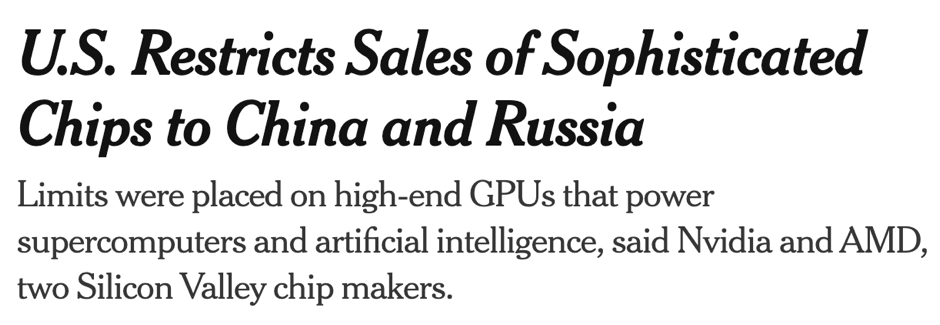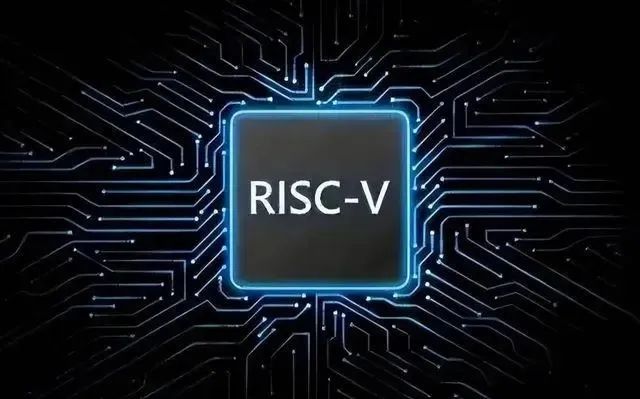Countries are rolling out policies aimed
to reducing reliance on U.S. chip technology
On December 15, China has requested WTO dispute consultations with the United States, challenging US export control and related measures with respect to certain advanced computing semiconductor chips and manufacturing products, supercomputer items, as well as related technologies and services, destined for or otherwise related to China. – WTO News
On December 14, the British “Financial Times” reported that Arm Ltd., a British chip technology company owned by Japan’s Softbank, has determined that the United States and the Britain will not approve its latest Neoverse V series licenses to export technology to China. This decision will prevent Chinese technology giants from purchasing Neoverse V2 and V1. This is also the first known time Arm has decided could not export its most cutting-edge designs to China. On that day, Reuters also reported and mentioned that in order to slow Beijing’s technological and military advances, the United States published a sweeping set of export control two months ago, including a measure to cut China off from certain semiconductor chips made anywhere in the world with U.S. tools.
 – Reuters
– Reuters
In August of this year, the US CHIPS and Science Act (CHIPS and Science Act) was formally passed and legislated. This act has had an impact on China’s semiconductor and other related industries. In the same month, according to the New York Times, the United States restricted the sale of sophisticated chips to China and Russia. NVIDIA and AMD said the move was to limit the supply of high-end GPUs for supercomputers and artificial intelligence. It is also a fresh attempt by the United States to use semiconductors to thwart rivals’ advances in high-performance computing and artificial intelligence.
 – New York Times
– New York Times
To reduce reliance on U.S. chips, countries around the world are introducing corresponding countermeasures. This year, the EU has passed the European Chip Act. According to Reuters, EU countries on Wednesday, Nov. 23, agreed to a 45-billion-euro ($46.6 billion) plan to fund the production of chips, aiming to support local chip supply chain.
 – Reuters
– Reuters
According to Hong Kong, Dec 13 (Reuters) – China is working on a more than 1 trillion-CNY ($143 billion) support package for its semiconductor industry, in a major step towards self-sufficiency in chips and to counter U.S. moves aimed at slowing its technological advances.
 – Reuters
– Reuters

The world’s two largest computer chip manufacturers – Intel and AMD, have announced the suspension of sales in Russia, and the world’s leading semiconductor intellectual property provider – ARM has also announced that it will stop providing products and support to Russian customers and partners.
At present, the two mainstream chip architectures in the world are ARM and X86. ARM monopolizes the mobile chip market, while Intel’s X86 monopolizes the PC chip market. Domestic chip design companies basically develop chips based on these two architectures, especially the ARM architecture. After all, the ARM architecture is open to authorization and has become more and more mainstream. However, under the situation of international competition, even financial tools will be used as competitive weapons between countries, not to mention chip architectures like ARM.

In an environment where the U.S. has introduced restrictions on Chinese chips, forcing Chinese companies to turn to open source, license-free architectures to replace Arm. with RISC-V as a strong competitor to Arm, it is significant for China to develop RISC-V, and the open-source ecology of RISC-V will bring important technical support to China’s CPU development under patent barriers. The original intent of the RISC-V project was to create an open-source, license-free, royalty-free instruction set architecture in the processor IC domain and to enable the use of modular ICs or software to define hardware in the future, complemented by a community approach to design and maintain relevant standards.
In addition to RISC-V’s open-source, license-free, and low-power consumption, its instruction set simplicity, modular ISA (basic instruction set plus extensions), strong stability (adding instructions through optional extensions), and ability to be designed through a community approach (to share the RISC-V software ecosystem) make it stand out among many instructions set architectures.
The RSIC-V instruction set is designed to meet the needs of processors of all levels of complexity, from microcontrollers to supercomputers, and to support a wide range of implementations from FPGAs, ASICs, and even future devices, while enabling efficient implementation of a wide range of microarchitectures, supporting numerous customizations and acceleration features, and working well with existing software and programming languages. programming languages.
Although the RISC-V architecture cannot compete with the x86 and ARM architectures in a short period of time, it is believed that the RSIC-V software ecosystem will gradually grow as more and more companies and projects adopt the RSIC-V architecture for their processors. Almost all domestic mainstream technology companies and research institutes, such as Huawei, ZTE, Ali, CAS, etc. have also joined the RISC-V ecosystem to build an ecologically open and autonomous instruction set architecture for China.
With the development of RISC-V technology and applications, the following three points will become the trend: first, RISC-V will continue to advance to high main frequency and high performance; second, with the emergence of stable hardware, the full-stack development of RISC-V architecture will become the trend, from IP to SOC, development boards, SOM, operating systems and software applications will be fully optimized in the future; third, RISC-V architecture will move towards broader ecological cooperation.
The future application scenarios of smart energy, smart industry, smart city, and smart logistics will be addressed by LeapFive Technology. With RISC-V instruction set architecture-based microprocessors as the core and various forms of co-processing units such as GPU, Crypto Engine, and NPU integrated to meet high performance, security, and intelligence, custom development of AIoT edge underlying software and hardware platform is one of the current reliable and efficient paths to build smart edge devices.
